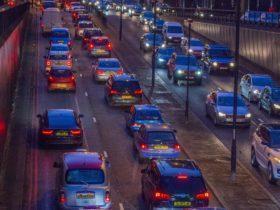Reshaping Mobility: digitization continues to plough its way through whole industries, changing such old worlds as retail and finance in ways big and small. In the world of mobility and transport, a number of forces are driving massive shifts in the expectations and the needs of those who run or use our transportation systems: commuters, shippers, and many more.
We’re only just starting to see the outlines and contours of the big changes underway. The shifts now taking shape are being propelled by advances in technology, shifting socioeconomic factors, and public policy.
More than a million people die each year on the world’s roads. According to the U.S. Department of Transportation, there were more than 5 million crashes and 32,000 fatalities on U.S. roads in 2014.
With more than a billion cars on roads worldwide, the near-term goals for connected mobility solutions must include enabling both transport system operators and users to make more informed decisions that reduce travel delays. Congestion causes 5.5 billion hours of travel delay each year, and urban congestion in the U.S. alone costs over $100 billion annually. Drivers in the UK’s top 10 congested cities waste more than 55 hours a year in traffic.
Reshaping Mobility. The forces now creating massive change in transportation are many, but a few of the most important are worth discussing here:
Technology is increasing connectivity.
As consumers of information, we have personal electronics and navigation systems, and most of the time we probably have more information about the current status of traffic than the experts in the traffic management centers. Without better visibility, they can’t serve our needs very well. Networks (whether wired or wireless) built to support rail, other mass transit, and some public safety operations, have typically been built around proprietary solutions. Many of them were put in place decades ago, which means that we now must deal with aging and disparate networks that are growing prohibitively expensive to operate and manage. Fragmented communications among multiple networks creates gaps in connectivity which, in turn, introduce public safety risks for passengers, first responders, and citizens. It’s widely accepted that improved communications between mass transit, emergency response vehicles, and the existing traffic management infrastructure helps to optimize the routing of vehicles, further reducing potential delays.
Socioeconomic forces and urbanization are driving the need for more efficient transportation systems.
Today, we have more people living in cities than in rural areas, which increases traffic and congestion. An aging population forces us to consider mobility issues in terms of elderly access to healthcare and daily services. Global supply chains have disrupted traffic patterns in many countries; as countries go from insourcing to outsourcing and then go from outsourcing to insourcing again, supply chains are continually, dynamically being rerouted. This causes major new influxes of trucking and logistics companies to handle the freight associated with those changes, along with increased traffic congestion.
Passengers are demanding constant Wi-Fi connections to their devices while in transit.
Transportation operators have to do more with less; they need to attract more riders, keep their operating costs down, and potentially rely on new business models. As technology evolves, so must public safety and public security policies. Technology capabilities that were not available just a couple of years ago now require us to have public safety and public security officials upgrade their requirements to meet the opportunities created by emerging technologies.
Lack of interoperability isolates regional systems.
Disparities between regional transportation systems create headaches for travelers and any others who depend on modern transport systems. This is particularly problematic on a continent like Europe, where one can easily drive from country to country, and thereby experience the problems resulting from the deployment of disparate technologies, all lacking interoperability. This causes supply chain disruptions, and it reduces efficiency in logistics. Operating vehicles more efficiently means keeping them in motion, and driving them at maximum performance. Vehicles should not be sitting in congested city traffic, burning fossil fuels.
In order to ensure a smooth transition into an uncertain future any, the leaders of transportation and public safety organizations now believe that it’s become mission-critical to augment their existing radio and limited data networks with video and real-time data solutions. That’s the one of the best ways for first responders and operators to have the contextual awareness they need in a variety of incidents, including life-threatening situations, as well as daily operations.
All of the elements that constitute the world of transport and travel are being transformed by the Internet of Things revolution — powered by digitization. Reshaping mobility: Route planning; finding one’s way while in transit; traveling via mass transit, or on foot; collecting fares or tolls; congestion and road pricing; traffic management; video surveillance; choosing amongst different transportation options during any given trip; reducing trips through telecommuting—all of these are evolving at dizzying speed.
Many of the emerging innovations now effecting transportation are giving individuals greater choices as they seek to move around cities. Anthony Foxx, the Obama administration’s Secretary of Transportation, put it this way: “The key word for transportation in the 21st century is ‘choice’ ”. Reshaping Mobility: travelers vary widely in age, amounts of disposable income for travel, abilities to move, degrees of independence, and destinations. How to move a 2 year-old is not the same as how to move a 28 year-old, nor a 38 year-old travelling with children. Adopting a truly new approach to transportation requires providing a much wider variety of choices.
Two of our most innovative leaders, one in transport and one in tech, have laid out the challenge in simple terms:
“Now is the time for us to look at vehicles the same way we look at smart phones, laptops and tablets; as pieces of a much bigger, richer network.”
– Bill Ford, Executive Chairman, Ford Motor Company
“If transportation technology was moving along as fast as microprocessor technology, then the day after tomorrow I would be able to get in a taxi and be in Tokyo in 30 seconds.”
– W. Daniel Hillis, renowned inventor and engineer: Thinking Machines, Disney, Applied Minds, MIT
The advanced research team at the Gartner Group’s global headquarters had this conclusion to share: “Similar to the way telephones have evolved into smartphones, over the next 10 years automobiles will rapidly become ‘connected vehicles’ that access, consume, and create information and share it with drivers, passengers, public infrastructure, and machines including other cars.”
Reshaping Mobility: a true evolution in our thinking is only possible when we come to see vehicles, roadways, trains, stations, airports and shipping ports not simply as modes of transportation. They are nodes in a connected network just like our smartphones, laptops, and tablets. What happens when people, devices, processes and the underlying transportation infrastructure, as a whole, become more interconnected? One outcome is that the systems in place will enable more intelligent communication and decision-making. This evolution toward more holistic and data driven transportation systems can create greater safety, mobility and efficiency inside existing transportation systems.
The author of the article is Mr. Gordon Feller. He is the Co-Founder of Meeting of the Minds, a global thought leadership network and knowledge-sharing platform focused on the future of sustainable cities, innovation and technology.
Please, learn more about Meeting of Minds at: http://meetingoftheminds.org/















